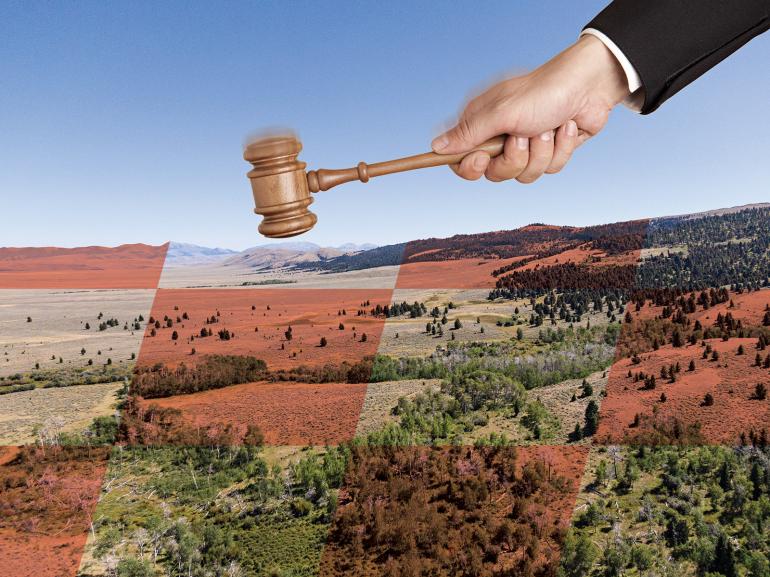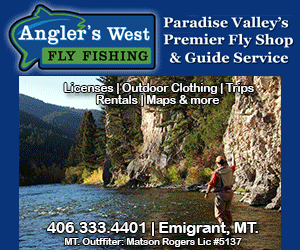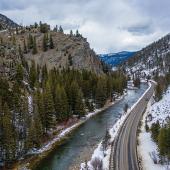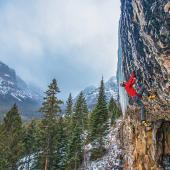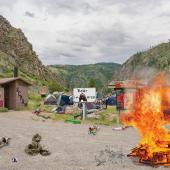Don't Mess with Our Access
How the 2025 legislature will affect our future.
We’ve got it pretty good when it comes to access. Roughly a third of Montana, some 30 million acres, is public land. We’re home to the gold-standard stream-access law, which allows us to float and wade below the normal high-water mark. We have one of the most celebrated access programs in the country—Block Management—which opens the gates to nearly six million acres of private lands for hunters.
But not everything is rosy. According to OnX, an estimated 3.1 million acres—over ten percent—of our public lands are inaccessible, and crowding on land and water increases with each passing season. Changes in land ownership, poor hunter behavior, and rising lease rates have resulted in the loss of roughly two million acres of private land enrolled for Block Management since 2002. Congestion on our rivers has reached a boiling point, resulting in demands for river-use studies and calls to restrict certain user groups.
More money doesn’t always mean more access, but it’s certainly an important first step.
With fewer places to go, crowded boat ramps, more hunters, and a new era of Montana landowners who think they own the water and the wildlife, access remains a hot topic—and for good reason. It raises the question: How will the laws passed by the 2025 legislature affect our future?
The Good
In terms of access, it was actually a pretty good session. Several pro-access, pro-habitat bills were passed by the legislature and signed into law by Governor Gianforte.
Recreational marijuana is big business in Montana, and thanks to HB 932, carried by Rep. Walsh (R-Twin Bridges) and requested and cosponsored by Rep. Edwards (D-Bozeman), a portion of taxes from recreational marijuana sales will continue to fund the Habitat Montana program, which helps acquire new public lands or secure access easements. It also allows new types of habitat projects that expand public access. Now, more money doesn’t always mean more access, but it’s certainly an important first step.
Speaking of steps, how nice would it be just to step across some private land to hunt adjacent public land? HB 763 from Rep. Seckinger (D-Bozeman) hopes to allow just that by creating a new form of Block Management that incentivizes landowners to allow walk-through access to get to inaccessible or under-accessible public lands. Any landowner willing to open access to adjacent public land would be eligible for a payday, rather than just those leasing the adjacent public lands. It’s a big improvement over what we had.
As upland-bird-hunting pressure continues to grow, driven largely by limited access and shrinking habitat, Rep. France’s HB 372 aims to improve both by slightly increasing fees for upland-bird licenses (with higher increases on nonresident licenses.) The bill is expected to generate an additional $1 million every two years for the Upland Game Bird Enhancement Program, which funds habitat improvements and hunting access.
With fewer places to go, crowded boat ramps, more hunters, and a new era of Montana landowners who think they own the water and the wildlife, access remains a hot topic—and for good reason.
SB 441 from Sen. Loge (R-St. Regis) established the Montana Block Management Enforcement network, which creates a sliding scale of punishments for convicted rule-breakers on Block Management properties. Public access to private lands is a privilege, and punishments for not following the rules are needed to help address the biggest complaint from Block Management cooperators: poor hunter behavior.
SB 83, also from Sen. Loge, allows the public-use rules on private lands enrolled in access agreements, like Block Management, to be enforced year-round, rather than just during hunting seasons.
Opportunities Squandered
After the bipartisan death of HJ 24, which sought to support public-land transfer, a competing resolution—HJ 39—was introduced by Rep. Seckinger (D-Bozeman) to protect public lands. Sadly, it failed to pass the Committee on party lines.
HB 907 from House Minority Leader Rep. Sullivan (D-Missoula) offered an incentive-based approach to encourage nonresident landowners to provide public access. HB 907 would have also repealed 2023’s controversial HB907 and instead of guaranteeing deer and elk tags simply for nonresidents owning land, there would have had to been a public access component. The bill cleared the House but was tabled in the Senate Committee, never reaching the Senate Floor.
Pay attention, get involved, and scream it from the rooftops: don’t mess with our access!
To get a better handle on river crowding, HB 762 from Rep. Seckinger (D-Bozeman) would have required FWP to study and report back on types of usage on specific rivers. This data would have helped influence future management decisions, but unfortunately, and confusingly, Gianforte vetoed the bill.
Finally, HB 145 from Rep. Parry (R-Colstrip) sought to increase the nonresident base hunting license fee from $15 to $100, with $90 of that going directly toward compensating enrolled BMA landowners. The bill passed with strong bipartisan support, but Governor Gianforte insisted on a more moderate increase price increase for nonresidents, meaning an estimated $4,236,300 in annual revenue that could have gone to supporting Block Management was left on the table.
What’s Next?
The session is over, but the access work continues. Many decisions happen in the interim at the Environmental Quality Council or Fish and Wildlife Commission meetings. The Private Lands / Public Wildlife Committee is the kitchen where new ideas are baked. So pay attention, get involved, and scream it from the rooftops: don’t mess with our access!
Kevin Farron is the Montana Wildlife Federation’s conservation director.


